| Article ID | Journal | Published Year | Pages | File Type |
|---|---|---|---|---|
| 2012126 | Pharmacological Reports | 2010 | 11 Pages |
The aim of this study was to compare the action of fenofibrate on monocyte cytokine release between patients with isolated mixed dyslipidemia and dyslipidemia coexisting with prediabetic states in relationship with its metabolic actions. We compared 96 primary mixed dyslipidemic patients and 29 age-, sex- and weight-matched control subjects with normal lipid profile. Depending on glucose metabolism, dyslipidemic patients were allocated into one of three treatment groups: isolated dyslipidemia, dyslipidemia coexisting with impaired fasting glucose (IFG) and dyslipidemia coexisting with impaired glucose tolerance (IGT). Lipid profile, fasting and 2-h post-glucose load plasma glucose levels, HOMA and monocyte release of interleukin-1β and MCP-1 were assessed at baseline and after 30 and 90 days of micronized fenofibrate treatment (267 mg/daily). Compared to monocytes from control subjects, monocytes of dyslipidemic patients released a greater amounts of interleukin-1β and MCP-1. MCP-1 release was higher in the IFG group than in the remaining groups of dyslipidemic patients. In all groups of dyslipidemic patients, micronized fenofibrate reduced monocyte release of interleukin-1β and MCP-1, and this effect was stronger in prediabetic subjects. Fenofibrate treatment also decreased HOMA in IFG and IGT patients, fasting plasma glucose in IFG subjects and 2-h post-glucose load plasma glucose in IGT patients. The observed differences between the studied groups regarding fenofibrate action on glucose homeostasis and cytokine release suggest that fibrate therapy may bring particular benefits to persons with metabolic syndrome.
